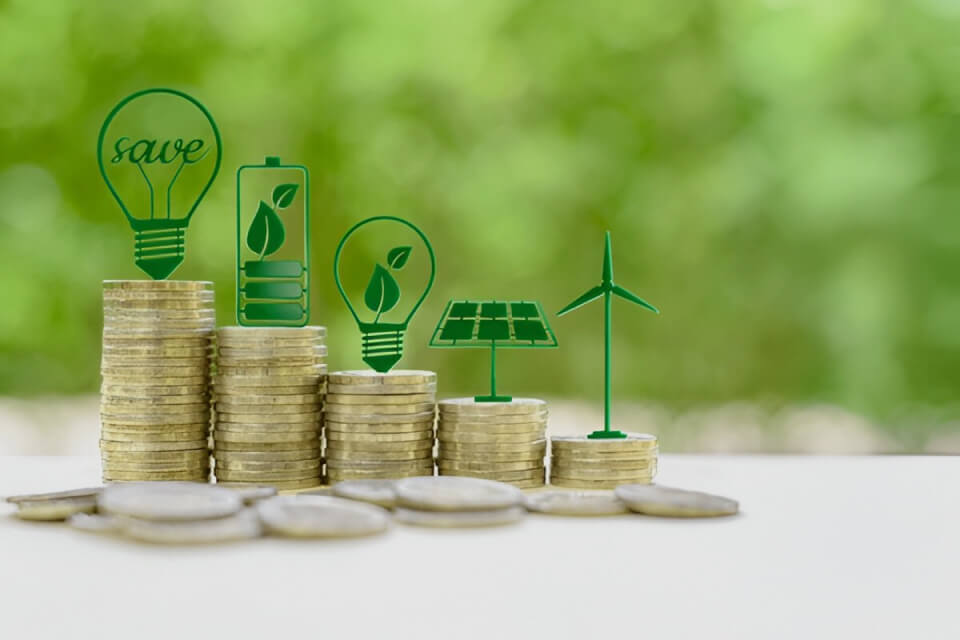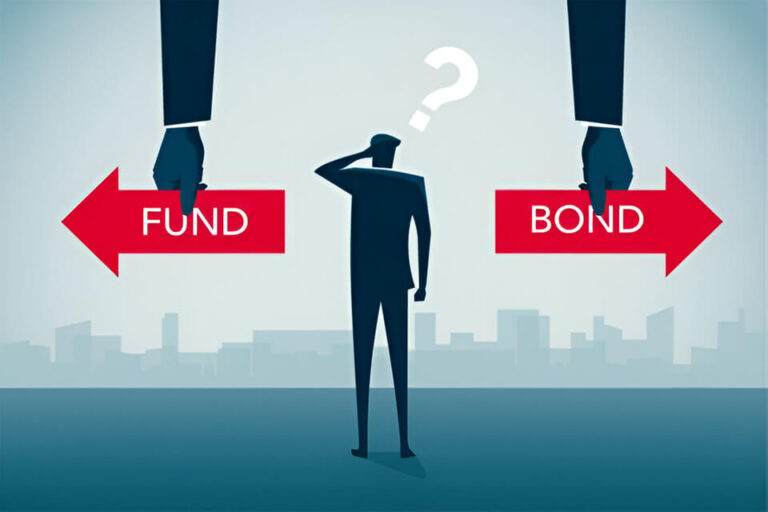If you’re a stock investor and want to spread out your risk, Exchange-Traded Funds (ETFs) can be a great choice. First of all, ETFs let you invest in many things at once—like stocks, bonds, or even gold—which makes it easier to build a balanced portfolio.
However, before you start buying ETFs, it’s really important to understand the costs that come with them. Even though ETFs are known for being low-cost, there are still some fees and other expenses to think about.
In this simple guide, we’ll break down everything you need to know. You’ll learn about different types of costs, how to compare popular ETFs, what hidden fees to look for, how taxes might affect you, and how to figure out the Total Cost of Ownership (TCO). Plus, we’ll share smart tips for building a cost-effective ETF portfolio.
Introduction to Fee Structures in Exchange-Traded Funds (ETFs)
Exchange-traded funds, or ETFs for short, are a type of investment you can buy and sell on the stock market—just like regular stocks. But instead of owning one company, an ETF lets you invest in a whole group of things at once, like a stock index, bonds, gold, or even a mix of different assets.
Because of this, ETFs have become very popular. First of all, they give you a simple way to spread out your investments, which helps lower risk. Also, they are usually cheaper than traditional mutual funds, which means you keep more of your money. On top of that, they are flexible—you can trade them anytime the market is open.
However, it’s important to know that ETFs do come with fees. These costs may seem small, but over time, they can take a bite out of your returns. That’s why it’s so important to understand what you’re paying for.
All in all, ETFs can be a great tool for growing your money—if you take the time to learn how they work and what they cost.
Management Fees: Understanding the Cost of Expertise
Management fees are a big part of the total cost of investing in an ETF. These are the fees you pay the fund manager for running the ETF and making decisions about what goes into it. Most of the time, these fees are shown as a percentage of all the money in the fund, also called assets under management.
Why Management Fees Matter
First of all, expert help costs money. Fund managers use their skills to choose and manage the investments inside the ETF, and the management fee pays them for that work.
Next, not all ETFs charge the same. Some charge more—especially if they are actively managed or focused on a special area. On the other hand, many index-tracking ETFs have lower fees.
So, when picking an ETF, it’s really important to look at the management fee. Lower fees usually mean you keep more of your profits. But, you should also think about what you’re getting for that fee. A slightly higher cost might be worth it if the fund is managed well.
Trading Commissions: The Cost of Buying and Selling
When you buy or sell ETF shares, you might have to pay something called a trading commission. This is a fee your broker charges each time you make a trade. Over time, if you trade a lot, these fees can really add up and take away from your profits.
Key Points to Remember
First, how often you trade matters. If you’re buying and selling ETFs all the time, those little fees can quickly become a big cost.
Second, some brokers offer commission-free trading on certain ETFs. This can be a great choice if you’re trying to save money.
Finally, it’s smart to trade carefully. You can use something called a limit order to pick the price you want to buy or sell at. This gives you more control and may help you avoid surprises. Plus, picking a broker that offers commission-free ETFs can make a big difference in how much you spend.
In short, trading costs matter—so trade smart and keep more of your money.
Expense Ratios: The All-Encompassing Cost Metric
Expense ratios are a simple way to understand how much it costs to own an ETF. This number includes the management fee plus other costs needed to keep the ETF running. It’s shown as a percentage of the total money in the fund.
Why Expense Ratios Matter
First of all, expense ratios help you see the full cost of owning an ETF. Instead of looking at just one fee, you get the big picture. This makes it easier to know what you’re really paying.
Next, expense ratios are clear and easy to find. They include all the main costs, so you don’t have to worry about hidden fees. That kind of transparency helps you make smarter choices.
Finally, it’s a good idea to compare expense ratios when choosing between ETFs. Usually, the lower the expense ratio, the better it is for your wallet. But always make sure you’re also looking at the quality of the fund.
In short, lower costs often mean better returns over time—so pay attention to expense ratios!

Comparing Expense Ratios among Popular ETFs
There are lots of great ETFs out there, but some really stand out. If you want to grow your money and invest in a smart way, here are three popular ETFs you should know about. Each one has its own strengths, so you can pick what works best for you.
1. SPY – Tracks the S&P 500
To begin with, SPY is one of the most well-known ETFs. It follows the S&P 500 index, which includes 500 of the biggest U.S. companies. With a low fee of just 0.09%, it’s a solid and easy way to invest in the whole U.S. stock market.
2. VOO – Vanguard’s Budget-Friendly Choice
Next, there’s VOO. It also follows the S&P 500, but it’s even cheaper! Its fee is just 0.03%, which makes it one of the lowest-cost ETFs out there. So, if you want to save money on fees, VOO is a smart pick.
3. SCHD – Great for Dividend Income
Finally, we have SCHD. This ETF is a bit different because it focuses on strong companies that pay steady dividends. Its fee is still low at 0.06%. Because of this, SCHD is a great choice if you’re looking to earn regular income from your investments.
In the end, whether you want broad market exposure, super low fees, or steady income, one of these ETFs could be the right fit for you.
Hidden or Additional Costs in ETF Investing
While management fees and expense ratios are prominent components of ETF costs, investors should also be aware of hidden costs that can impact their returns.
Bid-Ask Spreads
Understanding Bid-Ask Spreads
When you trade an ETF, there are two prices to know. The ask price is what you pay to buy it. The bid price is what you get if you sell it. The difference between these two prices is called the bid-ask spread—and it’s something every investor should understand.
Why It Matters for Trading Costs
First of all, a small spread means you’re getting a better deal when buying or selling. But when the spread is wide, you might end up paying more or getting less. That can add up fast, especially if you trade a lot.
So, it’s always smart to check the bid-ask spread before you make a trade. The smaller the gap, the better it is for your wallet. Over time, paying attention to this can help you keep more of your investment returns.
Tracking Error
What Is Tracking Error?
Tracking error shows how closely an ETF follows the index it’s supposed to copy. In simple terms, it tells you the difference between the ETF’s performance and the performance of the index it is trying to match.
Why Tracking Error Matters
First of all, if the tracking error is small, it means the ETF is doing a good job of staying in line with the index. But if the tracking error is high, the ETF is not following the index very well. That can be a problem. You might not get the returns you were expecting, especially if the ETF is way off from the index.
So, before you invest, it’s a good idea to check the tracking error. The lower it is, the more reliable the ETF may be.

Tax Considerations for ETF Investors
Tax efficiency is crucial in ETF investing, impacting your after-tax returns. Understanding the tax implications is essential for optimizing your investments.
Capital Gains
When you sell an ETF and make money from it, you might have to pay a capital gains tax. This is a tax on the profit you earn from the sale. Even though ETFs are usually tax-friendly, the rules can be different depending on where you live.
Tax-Efficient ETFs
The good news is, some ETFs are built to help you pay less in taxes. These are called tax-efficient ETFs. They use smart methods—like in-kind creation and redemption—to avoid selling inside the fund, which helps lower taxes.
Because of this, they can be a smart choice if you plan to hold your investment for a long time.
In the end, watching out for taxes can help you keep more of your profits. So always think about taxes before making an investment move.
Dividends
Taxes on Dividends – What You Need to Know
When you own an ETF, you might get paid dividends. These are small payments made from the money earned by the stocks or other investments inside the ETF. However, these dividends can be taxed, and that might lower your total returns.
Tax-Efficient Dividend ETFs
The good news is, some ETFs are built to reduce how much they pay in dividends. These are called tax-efficient dividend ETFs. Instead of giving out money right away, they try to hold it and grow your investment inside the fund.
As a result, you may owe fewer taxes in the short term, and that means you keep more of what you earn. So, if you’re looking to grow your money over time, these types of ETFs can be a smart option to consider.
Total Cost of Ownership (TCO) Analysis
To really know how much an ETF costs, you need to look at the Total Cost of Ownership (TCO). This shows you the full picture—not just the price tag.
What’s Included in TCO?
First of all, TCO adds up several different costs. It includes management fees, expense ratios, trading commissions, bid-ask spreads, and even tracking error—which is when the ETF doesn’t follow its index perfectly.
How to Calculate It
Next, to figure out TCO, you just add up all these costs over time. This gives you a much better idea of how much you’re really paying to own the ETF.
In the end, knowing your TCO helps you make smarter choices and avoid surprises.
Cost-Effective Portfolio Construction
Constructing a cost-effective ETF portfolio is crucial for maximizing returns and minimizing expenses.
Strategies for Cost-Effective Portfolio Construction
First, make sure to diversify. This means spreading your money across different asset classes and sectors. Doing this can lower your risk and help you get better returns over time.
Next, look for low-cost ETFs. These have lower fees, so more of your money stays invested and working for you.
Also, try to choose tax-efficient ETFs—especially if you’re using a regular (taxable) account. These ETFs can help you pay less in taxes and keep more of your earnings.
Finally, if you trade often, use a platform that offers commission-free trading. This way, you won’t lose money every time you buy or sell.
In the end, using these simple strategies can help you build a portfolio that’s smart, low-cost, and better for the long run.

Frequently Asked Questions (FAQs)
1. What are the typical expense ratios for ETFs?
Expense ratios vary, but many ETFs have ratios below 0.10%, making them cost-effective options for investors.
2. Which ETF offers the lowest expense ratio for S&P 500 exposure?
VOO from Vanguard has the lowest expense ratio among the three mentioned ETFs.
3. How can I minimize bid-ask spreads when trading ETFs?
Consider using limit orders, which allow you to specify the price at which you want to buy or sell ETF shares, potentially reducing the impact of spreads.
4. Are there ETFs that minimize capital gains taxes?
Yes, some ETFs are designed to minimize capital gains distributions, making them tax-efficient investments for long-term investors.
5. How can I build a cost-effective ETF portfolio?
Focus on diversification, select ETFs with low expense ratios, and consider tax implications when constructing your portfolio.
Conclusion
In conclusion, it’s very important to look closely at all the costs when you invest in ETFs. First, make sure you understand the different fees, like management fees and expense ratios. Next, always compare these costs between ETFs to find the best deal.
Also, don’t forget about hidden costs—like trading fees, bid-ask spreads, and tracking errors. These can slowly eat into your profits if you’re not careful.
On top of that, check how tax-efficient your ETFs are, especially if you’re using a regular account. And always take time to figure out the Total Cost of Ownership (TCO), so you know exactly what you’re paying.
Most importantly, remember that investing always comes with risks. So, always do your research before making a move.



